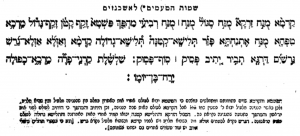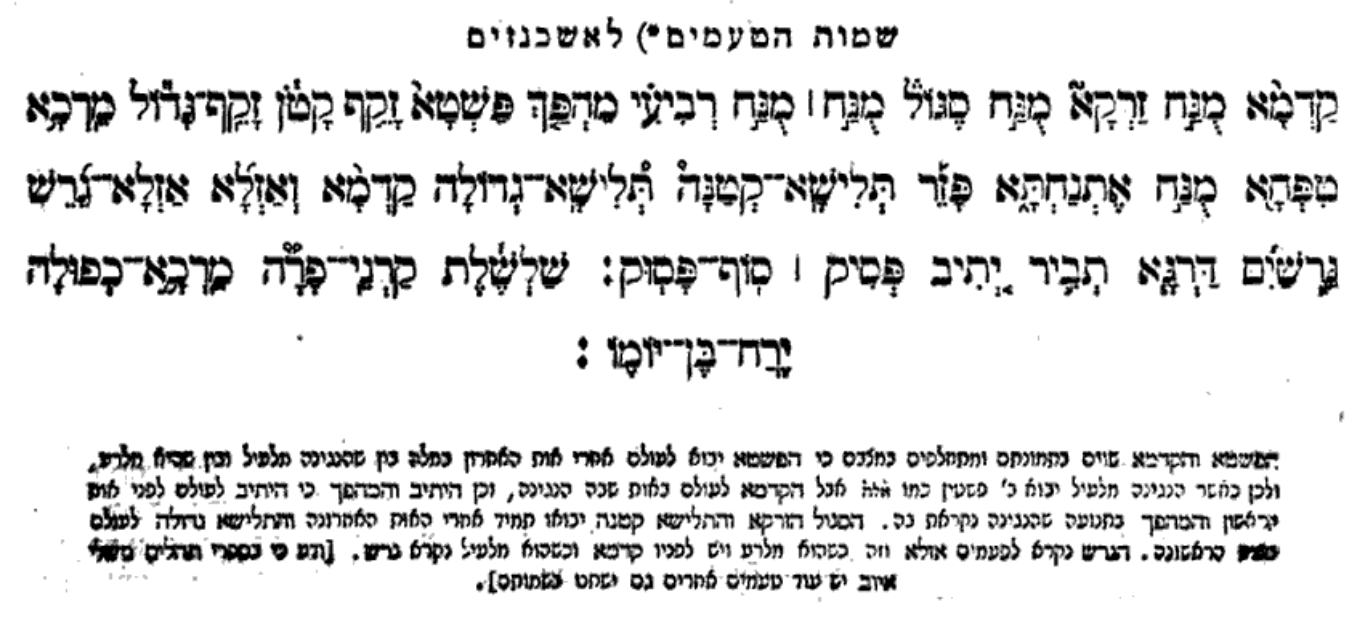This is an archive of cantillation tables and other essential resources for reading cantillated text in all of the established and developing traditions for the public reading of cantillated text. If you have a helpful resource to offer, please share it. Filter resources by Collaborator Name Filter resources by Tag Filter resources by Category Filter resources by Language Filter resources by Date Range
For aspiring ba’al qoreh (readers) of Megillat Esther studying its various styles of cantillation (Hebrew, ta’amei hamiqra or in Yiddish, טראָפּ trōp), a fair number of recordings are popping up online, but only one so far is being shared with a free/libre, copyleft license thanks to Gabriel Seed, lead developer of zemirotdatabase.org. The audio file is free to redistribute and remix under the CC BY-SA license. We’re honored to share Gabriel’s recording of a zarqa table for Megillat Esther read in the Nusaḥ Ashkenaz style. . . . Categories: Tags: Contributor(s): The following seven lessons by Rabbi Hillel Ḥayim Yisraeli-Lavery to help the student prepare for their reading of Megillat Esther. The nusaḥ taught is Israeli style Ashkenaz-Lithuanian. . . . Categories: Tags: Contributor(s): We are sharing these tables for Taamei haMikra (cantillation for Torah reading) because we weren’t able to find these available in Unicode Hebrew text anywhere else on the Internet. We would very much like to also share the traditional tables of Taamei haMikra for the Nusaḥ Roma (Italy), Nusaḥ Teman (Yemen), and others along with excellent free-culture licensed recordings of these tables being chanted. Unfortunately, there is a paucity of free-culture licensed audio and video of the taamei hamikra being chanted. Please help us by sharing your audio or video with a Creative Commons Attribution license. . . . Categories: Tags: Contributor(s): There are 24 books in the Tanakh. Of these, 21 (all but Psalms, Proverbs, and Job) share a grammatical system of cantillation marks, or te’amim. Of these 21, Ashkenazim have melodic traditions for reading eighteen of them. The Torah has its system, the prophets have the Haftarah system, the three festival scrolls have their shared system, and Esther and Lamentations have their own unique systems. But what of the three remaining books? . . . Categories: Tags: Contributor(s): An Ashkenazi-style cantillation system for the Book of Job. . . . Categories: Tags: Contributor(s): An Ashkenazi-style cantillation system for the Book of Proverbs. . . . Categories: Tags: Contributor(s): An Ashkenazi-style cantillation system for the Book of Psalms. . . . Categories: Tags: Contributor(s): A digital font integrating Masoretic Hebrew cantillation marks in languages presented in Latin scripts. . . . Categories: Tags: Contributor(s): |



